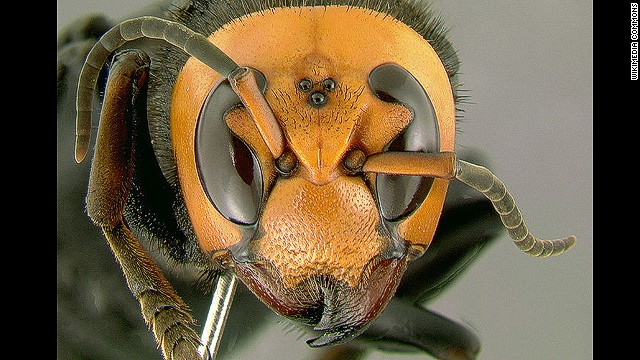At least 19 people have been
stung to death by hornets -- which may include the world's largest
hornet species Vespa mandarinia -- in China's central Shaanxi province in the last three months, according to the city government of Ankang, the apparent epicenter of a recent spate of fatalities and injuries.
A total of 583 people in
the area have been stung by hornets since July 1, say city officials.
Seventy victims are still recovering in hospitals.
Chen Changlin was hospitalized after being attacked by hornets, while harvesting rice last week.
"I ran and shouted for
help, but the hornets chased me about 200 meters, and stung me for more
than 3 minutes," he recounted to the state-run
China Youth Daily.
Chen said hornets had
first swarmed a woman and child working nearby, who then ran towards
him. Both later died from the hornets' toxins.
"The more you run, the
more they want to chase you," said another victim, whose kidneys were
ravaged by the venom. When he was admitted to the hospital, his urine
was the color of soy sauce, according to local reports.
Earlier this month, 30 people -- including
23 primary school children
aged between six and eight years -- were injured in a hornet attack in
Guangxi province, south of Shaanxi. Their teacher, Li Zhiqiang, told his
students to hide under tables as he tried to drive away the insects
before he lost consciousness. The school's headmaster told local media
that most of the injured suffered stings to their heads, necks, hands
and feet.
Nearly
60 students and teachers were injured in a separate incident in the province at the start of the month, according to state media.
Experts say a number of
reasons may have contributed to the apparent increase in hornet
activity, including the region's recent hot, dry weather, land
development and hornet sensitivity to the smell of people.
The Asian killer hornet,
which is suspected in these incidents, are formidable, carnivorous
killers, according to the non-profit
Honeybee Conservancy.
The species feed their young with the larvae of other insects and use
their talons and mandibles to sever the limbs and heads of their prey.
The hornet's venom sting is a neurotoxin so powerful that it dissolves
human tissue, according to the
Guinness Book of World Records.
This week's latest incidents spurred the Ankang city government to hold an
emergency video call addressing
local concerns. Vice Mayor Lu Qi said he would increase investment in
regional hornet control. Mayor Xu Qifang added the city would establish a
24-hour emergency hornet response team.
 Sorry, but the above answers are wrong. Our tradition of decorating with bows of Holly and pine trees and so forth is an ancient pagan tradition for celebrating the Winter Solstice on Dec 23 - 24. These traditions were continued after most of Europe adopted Christianity.
Sorry, but the above answers are wrong. Our tradition of decorating with bows of Holly and pine trees and so forth is an ancient pagan tradition for celebrating the Winter Solstice on Dec 23 - 24. These traditions were continued after most of Europe adopted Christianity. 










































